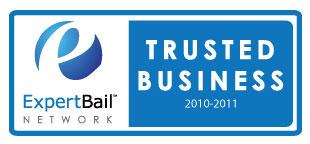Why Small Texas Counties Revoke Bond for Simple Violations
Posted on December 12, 2025
Top Misconceptions About Bail Bonds in Texas
Posted on November 23, 2025
Can You Lose Your Bond If You Miss Court for a Valid Reason?
Posted on November 12, 2025
What GPS Tracking Means for Texas Bail Clients
Posted on October 24, 2025
AI Bail Decisions in Texas: What Defendants Should Know
Posted on October 10, 2025
Can Mental Health Treatment Be a Condition for Texas Bail?
Posted on September 25, 2025
Why Texas Says No to Property Bonds (Most of the Time)
Posted on September 14, 2025
When a Defendant Flees and a Bail Cosigner Files for Bankruptcy
Posted on August 22, 2025
Texas Bail for Repeat Offenders: Is It Even Possible?
Posted on August 06, 2025
Bailing Out an Acquaintance: Risks You Need to Know
Posted on July 24, 2025
Can You Get a Refund on a Bail Bond in Texas?
Posted on July 07, 2025
Fugitive Recovery in Texas: What Happens If You Skip Bail?
Posted on June 27, 2025
Common Mistakes to Avoid When Choosing a Bail Bondsman
Posted on June 11, 2025
What Are the 4 Most Common Misconceptions About Bail Bonds?
Posted on May 23, 2025
How Do I Choose a Texas Bail Bondsman?
Posted on May 08, 2025
What Are Bail Bond Algorithms and Why Do They Matter?
Posted on April 23, 2025
Can a Co-Signer of a Bail Bond Go to Jail?
Posted on April 07, 2025
Advantages of Working With a Bail Bondsman
Posted on March 24, 2025
What Texas' Proposed Bail Reform Could Mean For You
Posted on March 10, 2025
Should I Help Someone With a Drug Addiction Make Bail?
Posted on February 21, 2025
Should I Put My Home Up As Collateral for My Son’s Bail?
Posted on February 10, 2025
3 Crimes with the Highest Average Bonds
Posted on January 21, 2025
Should I Go to Rehab While On Pretrial Release?
Posted on January 08, 2025
What is Wearing a Court-Ordered GPS Monitor Like?
Posted on December 26, 2024
4 Ways to Help a Loved One Who Has Just Been Arrested
Posted on December 06, 2024
Should I Wait Until the Bond Hearing to Call a Bondsman?
Posted on November 22, 2024
Common Conditions of Pretrial Release
Posted on November 07, 2024
How Bail is Different For Felonies and Misdemeanors
Posted on October 21, 2024
What to Consider Before Helping a Friend Make Bail
Posted on October 09, 2024
Can I Post Bail From Out of State?
Posted on September 24, 2024
When Is a Defendant Considered a Flight Risk?
Posted on September 11, 2024
Can a Bail Bondsman Turn Someone Away?
Posted on August 25, 2024
What Is an Indemnity Agreement?
Posted on August 09, 2024
After an Arrest, When Do You Contact a Bail Bondsman?
Posted on July 30, 2024
What Types of Bail Bonds Are Available in Texas?
Posted on July 12, 2024
Cash Bond Vs. Surety Bond in Texas
Posted on June 26, 2024
What is Bail Bond Forfeiture?
Posted on June 12, 2024
How Bail Bonds Benefit the Community and Support Fair Justice
Posted on May 24, 2024
Impact of Criminal Record Expungement on Bond Repayment
Posted on May 08, 2024
What is the Role of Collateral in Bail Bonds?
Posted on April 24, 2024
What to Do If Your Bail Bond Is Revoked
Posted on April 09, 2024
The Emotional Impact of Bail on Families in Texas
Posted on March 26, 2024
Bail Bonds vs. Cash Bail: What is the Difference in Texas?
Posted on March 12, 2024
Should You Get Bail Right After Being Arrested?
Posted on February 23, 2024
4 Things to Know Before Posting Bail for a Loved One
Posted on February 09, 2024
What Happens After You Are Released from Jail?
Posted on January 29, 2024
What Happens When You Skip Bail?
Posted on January 11, 2024
Navigating Your Loved One’s Bail
Posted on December 28, 2023
Tips on How to Get a Bail Bond Process to Go Smoothly
Posted on December 11, 2023
Types of Bail Bonds Used in Texas
Posted on November 29, 2023
Navigating the Bail System After an Assault Arrest in Texas
Posted on November 09, 2023
Can Anyone Use a Bail Bondsman?
Posted on October 26, 2023
How a Texas Bail Bondsman Can Help After an Arrest
Posted on October 09, 2023
What to Expect When Posting Bail in Texas
Posted on September 25, 2023
Top Mistakes To Avoid When Posting Bail in Texas
Posted on September 08, 2023
7 Things People May Not Know About Bail and Bail Bonds
Posted on August 31, 2023
Do I Have to Give Up the Title to My Home or Car to Get a Bail Bond?
Posted on August 17, 2023
Are Burglary Arrests More Common in the Summer?
Posted on July 17, 2023
What Are My Rights During a Police Interrogation After Being Arrested?
Posted on June 29, 2023
UPDATE: Five Things You Should Know About Surety Bonds in the State of Texas
Posted on June 19, 2023
What Happens if I Am Arrested for Violating the Conditions of Bail?
Posted on May 29, 2023
Will White Collar Crime Charges Result in High Amunts of Bail?
Posted on May 15, 2023
5 Things You Should Do if You Are Arrested and Charged With a Crime
Posted on April 21, 2023
Are Violent Crimes More Likely to Have High Bail Amounts?
Posted on February 23, 2023
What Are the Most Common Charges That Result in Bail in Texas?
Posted on February 15, 2023
What Types of Bail Bonds Are Available in Texas?
Posted on January 23, 2023
Is Bail Required for People With Previous Arrests or Convictions?
Posted on January 09, 2023
What Conditions Can a Judge Put in Place When Setting Bail?
Posted on December 12, 2022
Dallas Area DWI Arrests May Increase During the 2022 Holiday Season
Posted on November 29, 2022
Frequently Asked Questions About Bail and Bail Bonds in Texas
Posted on November 18, 2022
How Does a Judge Decide if a Person Is a Flight Risk When Setting Bail?
Posted on October 28, 2022
How Is Bail Set in Cases Involving Assault and Other Violent Crimes?
Posted on September 22, 2022
How Parents Can Help a Student Who Has Been Arrested While at College
Posted on September 07, 2022
Options for Getting Out of Jail When You Cannot Afford Bail
Posted on August 24, 2022
Understanding Bail for DWI Offenses in Texas
Posted on August 08, 2022
What Are the Penalties for Bail Jumping in Texas?
Posted on July 29, 2022
Are You More Likely to Get Arrested During the Summer?
Posted on July 22, 2022
Is Bail Required in Juvenile Crime Cases?
Posted on June 23, 2022
What Factors Will Increase the Amount of Bail I Will Need to Pay?
Posted on May 23, 2022
Can Texas Residents Receive Assistance From Bail Funds?
Posted on May 16, 2022
How Have Texas Bail Bond Laws and Procedures Changed Recently?
Posted on April 26, 2022
What Should I Do if I Find Out My Family Member Has Been Arrested?
Posted on April 15, 2022
What Should I Do If My Partner Is Arrested and I Cannot Afford Bail?
Posted on March 30, 2022
What is the Average Timeline of Events After an Arrest in Texas?
Posted on March 24, 2022
Will Restrictions Apply if I Post Bail After a Family Violence Arrest?
Posted on February 21, 2022
How Can I Post Bail After Being Arrested for Theft or Burglary?
Posted on February 09, 2022
5 Questions You Should Ask When Working With a Bail Agent to Post Bond
Posted on January 28, 2022
Can a Person Be Released on Bail After a Probation Violation?
Posted on January 19, 2022
What You Need to Know About Posting Bail After a Holiday DWI Arrest
Posted on December 27, 2021
How Will Being Arrested and Posting Bail Affect My Holiday Plans?
Posted on December 09, 2021
4 Crimes That May Result in Arrests During the Holidays
Posted on November 29, 2021
What Happens if a Person Skips Bail in Texas?
Posted on November 12, 2021
Steps to Follow When Bailing Someone Out of Jail
Posted on October 29, 2021
How Can I Get Out of Jail After Being Arrested on Drug Charges in Texas?
Posted on September 27, 2021
Can Parents Post Bail for a College Student Who Has Been Arrested?
Posted on September 13, 2021
Are There Restrictions That Apply to a Person Who Is Out on Bail?
Posted on August 26, 2021
Texas Bail Reform Bill May Make it Harder for Some to Get Out of Jail
Posted on August 12, 2021
3 Reasons to Post Bail and Get Out of Jail Quickly
Posted on July 20, 2021
When Is a Personal Bond Available After an Arrest?
Posted on July 07, 2021
What Happens if I Get Arrested While I Am Out on Bail?
Posted on June 28, 2021
What Types of Offenses Are Likely to Have High Amounts of Bail?
Posted on June 14, 2021
3 Common Myths About Bail Bonds and Getting Out of Jail After an Arrest
Posted on May 20, 2021
How to Bail a Friend or Family Member Out of Jail
Posted on May 07, 2021
What Types of Collateral Can I Use to Get a Bail Bond?
Posted on April 30, 2021
What Are the Most Common Reasons for Being Arrested in Dallas County?
Posted on April 08, 2021
How Students Can Get Out of Jail After Being Arrested on Spring Break
Posted on March 25, 2021
What You Need to Know if You Are Arrested on Family Violence Charges
Posted on March 03, 2021
How Can I Post Bail if I Have Limited Financial Resources?
Posted on February 25, 2021
Why Is it Important to Post Bail and Get Out of Jail Quickly?
Posted on February 04, 2021
5 Things You Should Not Do When You Are Out on Bail
Posted on January 28, 2021
Can I Get a Bail Bond for a Felony Charge in Texas?
Posted on January 07, 2021
What Are the Most Common Crimes That Lead to Arrests on New Year’s Eve?
Posted on December 31, 2020
What Happens When You Get Arrested in Texas?
Posted on December 10, 2020
Posting Bail to Get Out of Jail During the Holidays
Posted on November 30, 2020
What Are My Options if I Cannot Afford to Pay Bail?
Posted on November 14, 2020
When Can a Person Be Held in Jail Without Bail in Texas?
Posted on October 29, 2020
Do I Need to Pay Bail if I Am Arrested for DWI in Texas?
Posted on October 15, 2020
What Is the Difference Between Bail and Bond in Texas?
Posted on September 22, 2020
Texas Inmates Struggle to Secure Release During the COVID-19 Pandemic
Posted on September 11, 2020
What Are the Conditions of Receiving Bail in Texas?
Posted on August 10, 2020
What Are Bail Bonds and How Can They Help You in Texas?
Posted on August 03, 2020
Why You Don't Want to Shoplift in Dallas
Posted on March 23, 2020
Why You Should Get a Bail Bond Even If You Can Afford Bail
Posted on March 23, 2020
What Are the Options for Paying Your Bail Bond?
Posted on March 23, 2020
Why Jails and Prisons Are Also Potential Victims of the Coronavirus
Posted on March 18, 2020
The Fight to Maintain the Right to a Fair Bail
Posted on March 15, 2020
Why Jails and Prisons are Extremely Vulnerable to the Corona Virus
Posted on March 10, 2020
Do You Know These Important Legal Terms?
Posted on February 24, 2020
February is Warrant Forgiveness Month in Fort Worth
Posted on February 16, 2020
What Not to Do If You Are Pulled Over
Posted on February 16, 2020
How Your Bail Bondsman Keeps You on Track
Posted on February 16, 2020
How to Find an Inmate in a Dallas Jail
Posted on February 16, 2020
Dallas Inmates Must Wait for Cheaper Phone Calls
Posted on February 16, 2020
How Do Sting Operations Work in Dallas?
Posted on February 14, 2020
How Often Do Police Lineups Identify the Right Suspect?
Posted on February 06, 2020
Dallas' Rapping Panhandler Case Comes to a Close
Posted on February 05, 2020
What Happens If You're Caught with Marijuana in Dallas?
Posted on February 01, 2020
5 Groups That Help Ex-Cons Start a New Life
Posted on January 27, 2020
Why Doc's is Your Best Choice for Dallas Bail Bonds
Posted on January 27, 2020
3 Major Ways Jail Time Hurts Your Family
Posted on January 27, 2020
How to Find an Inmate in a Dallas Area Jail
Posted on January 24, 2020
4 Signs of a Reputable Bail Bond Agent
Posted on January 24, 2020
A Guide to Holiday DUI Checkpoints in Texas
Posted on December 07, 2019
In Jail for the Holidays? Doc's Will Bail You Out Fast!
Posted on November 20, 2019
5 Common Holiday Crimes That Land People in Jail
Posted on November 17, 2019
What to Do if You Can't Afford Bail
Posted on October 29, 2019
Why Do So Many Defendants Fail to Appear in Court?
Posted on October 10, 2019
Bail Bonds Benefits at Risk With Dallas Bail Reform
Posted on June 17, 2019
Dallas's Potential Algorithm for Bail Bonds: What You Need to Know
Posted on May 05, 2019
The 3 Ways to Get a Bail Bond—Without Cash
Posted on April 10, 2019
3 Reasons Time-Sensitive Bail Bonds Matter
Posted on April 06, 2019
Wrongfully Accused: A Real Problem Bail Can Help Solve
Posted on September 23, 2018
What Does It Take to Reduce Your Bail Amount?
Posted on July 25, 2018
What Are the Unintended Consequences of Not Posting Bail?
Posted on July 23, 2018
Why No Showing Your Court Date Is a Horrible Idea
Posted on July 20, 2018
Bail Considerations When It Isn't Your First Offense
Posted on July 18, 2018
Bail Bonds and Sexual Assault Charges: How Do the Courts Handle?
Posted on July 16, 2018
Want to Get Out of Jail? These Are Your Options
Posted on June 27, 2018
What's at Stake When You Miss Your Court Appearance?
Posted on June 25, 2018
What Will Be the True Cost of Bail?
Posted on June 22, 2018
How Long Will It Take to Get Released from Jail?
Posted on June 20, 2018
Contempt of Court: What Is It, What Do You Do When Found Guilty?
Posted on June 18, 2018
Farmers Branch Jail
Posted on March 14, 2018
Worried, Stuck in a Jail Cell: Flower Mound Bail Bonds Can Help
Posted on March 03, 2018
Finding A Bail Bondsman—Really Easy If You Know How Texas Regulates Bail Bondsman And Complaints
Posted on December 29, 2017
Dallas County Calling for Changes to Bail Bond System
Posted on October 29, 2017
Types of Bail Bonds in Texas
Posted on March 07, 2017
Preparing for a Bond Hearing
Posted on February 09, 2017
Understanding Bail Bonds in Texas
Posted on February 09, 2017
Cost of a Bail Bond
Posted on February 06, 2017
Texas Bail Bond Hearing Process – What You Need To Know
Posted on February 06, 2017
How Does Bail Work
Posted on February 06, 2017




The use of the Internet or this form for communication with the firm or any individual member of the firm does not establish an attorney-client relationship. Confidential or time-sensitive information should not be sent through this form.






